EXHIBITS
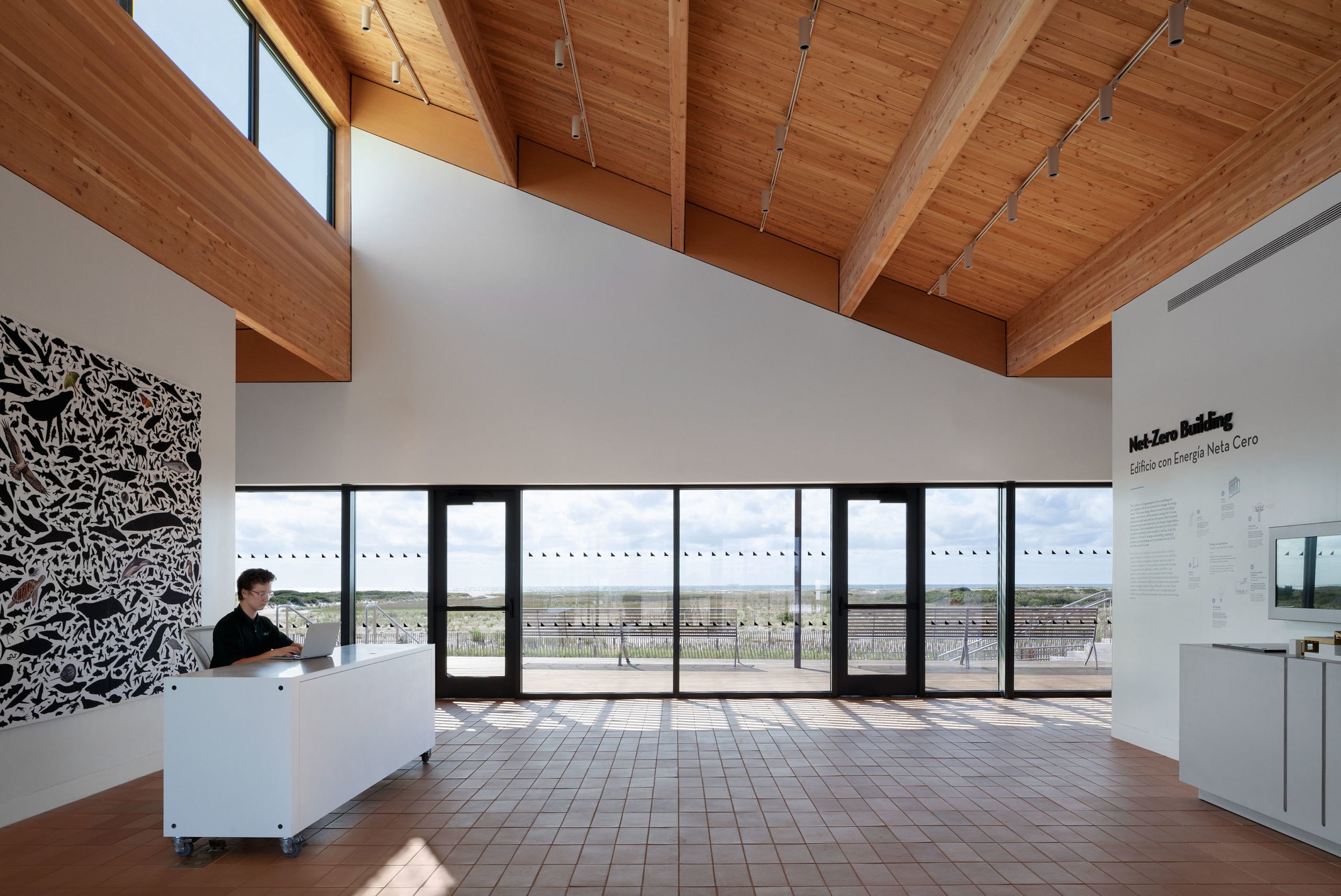
Temporary Exhibits
Permanent Exhibits
Through interactive games, videos, illustrations, and stories, the Center’s interior and exterior galleries trace the connection between energy systems and ecosystems. The Center’s exhibits have won international awards for design and accessibility.
Learn more about the exhibition narrative below, find out about accessibility at the center, and plan your visit.
Already arrived? Download an exhibit map.
Energy and nature meet at the Jones Beach Energy & Nature Center.
The Center demonstrates sustainable “net-zero” principles of design and construction. In the Lobby, learn about the ideas behind the building.
Solar panels and geothermal wells draw renewable energy from the environment to power a structure that was designed with the landscape in mind.
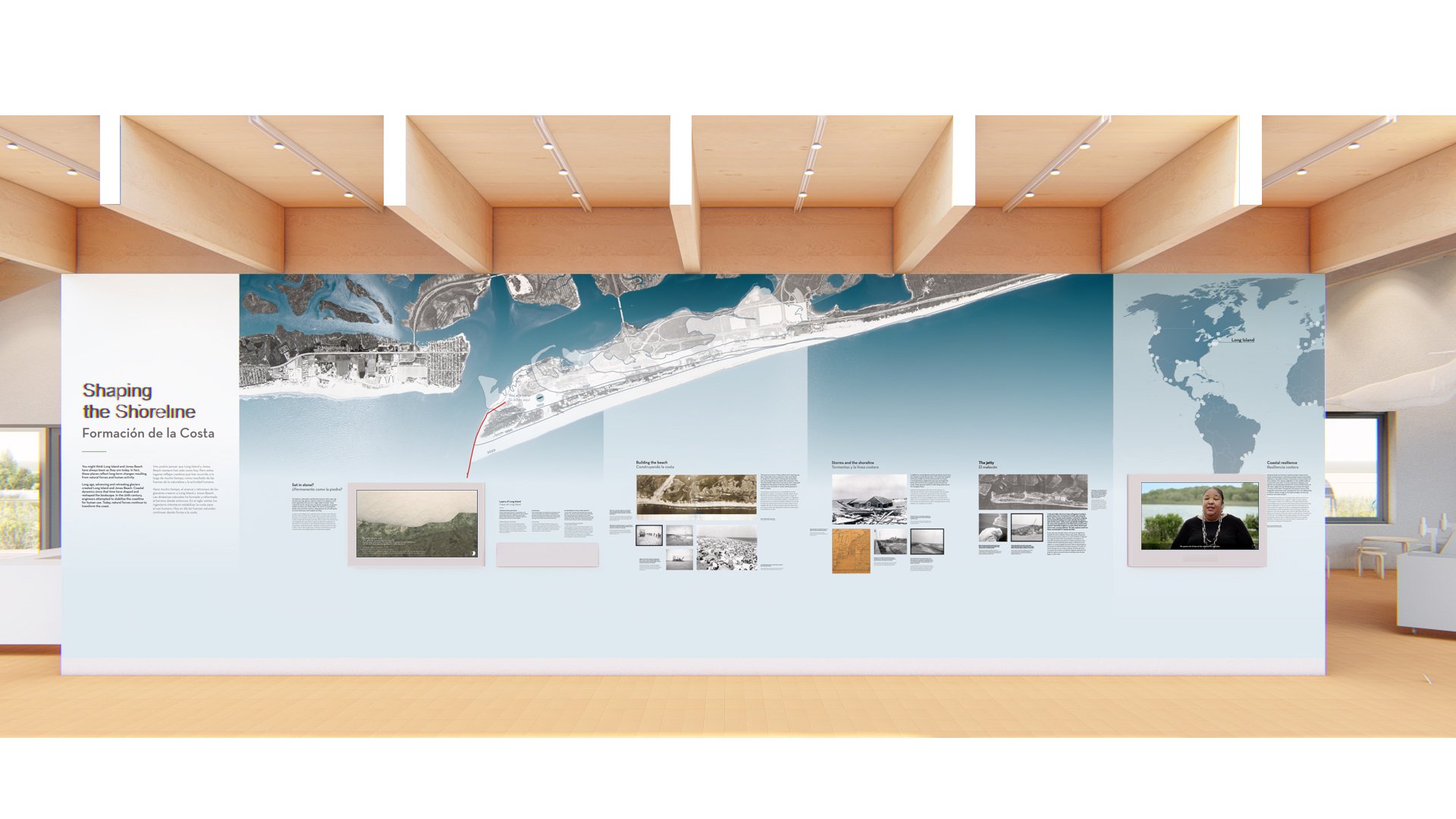
In the South Gallery, learn how energy shapes Jones Beach.
Jones Beach is an “energyscape”
Energy melted the glaciers that created Jones Beach 100,000 years ago, and powered the engineering that has remade Jones Beach Island in the last century.
Today, energy consumption drives climate change, affecting the sea level rise that threatens some Long Island communities.
Meanwhile, humans and other organisms live side-by-side with power plants and distribution lines.
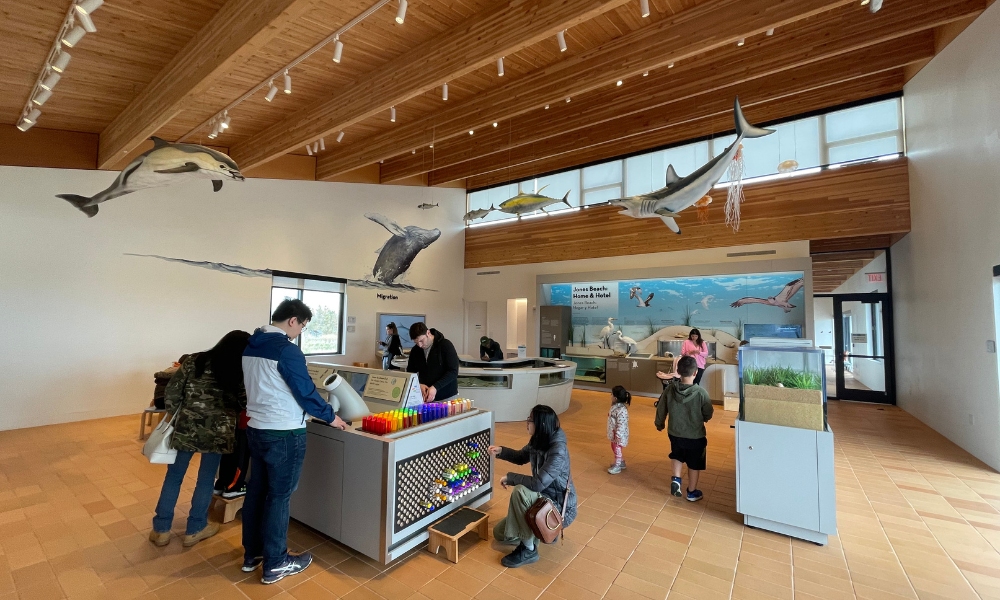
In the East Gallery, explore how ecosystems use energy.
Ecosystems depend on the cycling of energy between organisms.
Energy is in the waves that break on the beach and flow into the salt marsh. It passes between predators and prey, and it is carried across continents by the migration of species.
In marine and coastal ecosystems, hundreds of species are connected through a complex network called the food web. A threat to one species impacts access to energy for all.
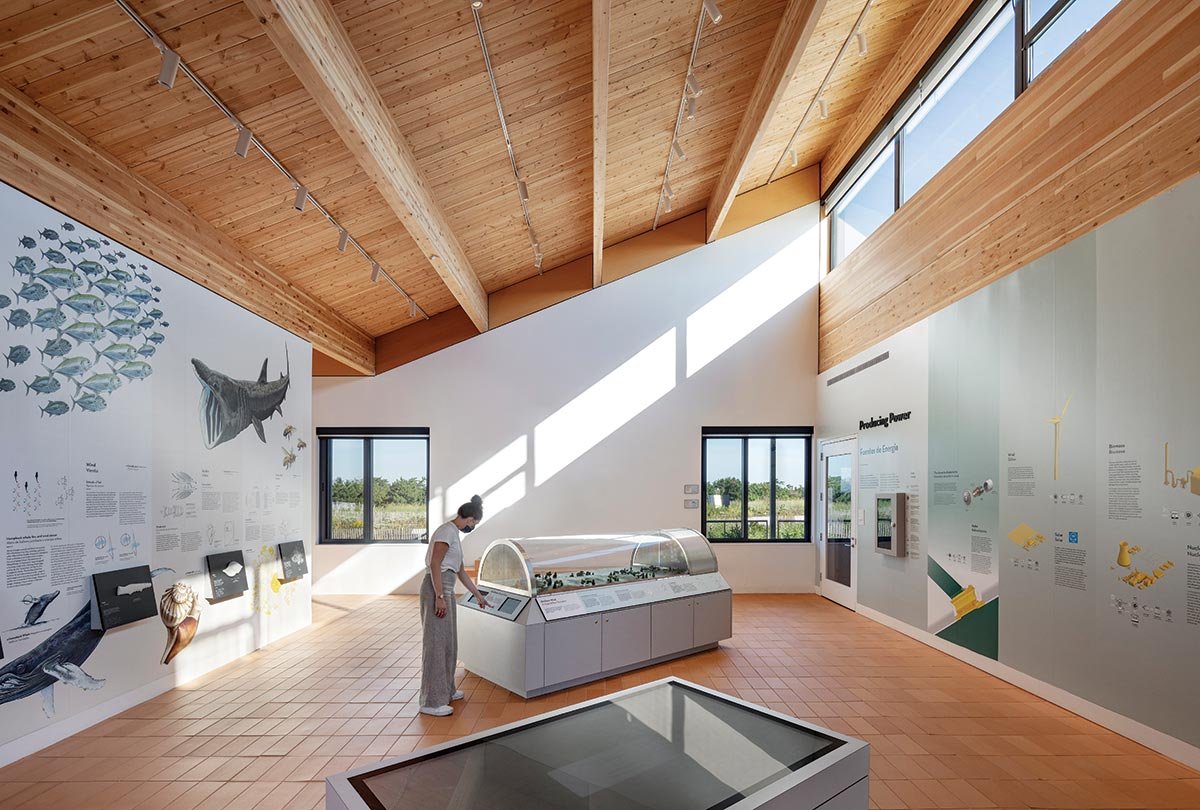
In the West Gallery, find out how nature shapes energy systems.
No energy without nature
All human-built energy systems are impacted by and shape the natural environment.
Fossil fuels are extracted from deep within the Earth and conveyed to consumers across long distances. Offshore wind farms turn strong sea breezes into electricity, and timber harvested from sustainable forests makes energy-efficient construction possible.
Meanwhile, biomimicry uses the wisdom of nature to design energy-efficient machines and systems.
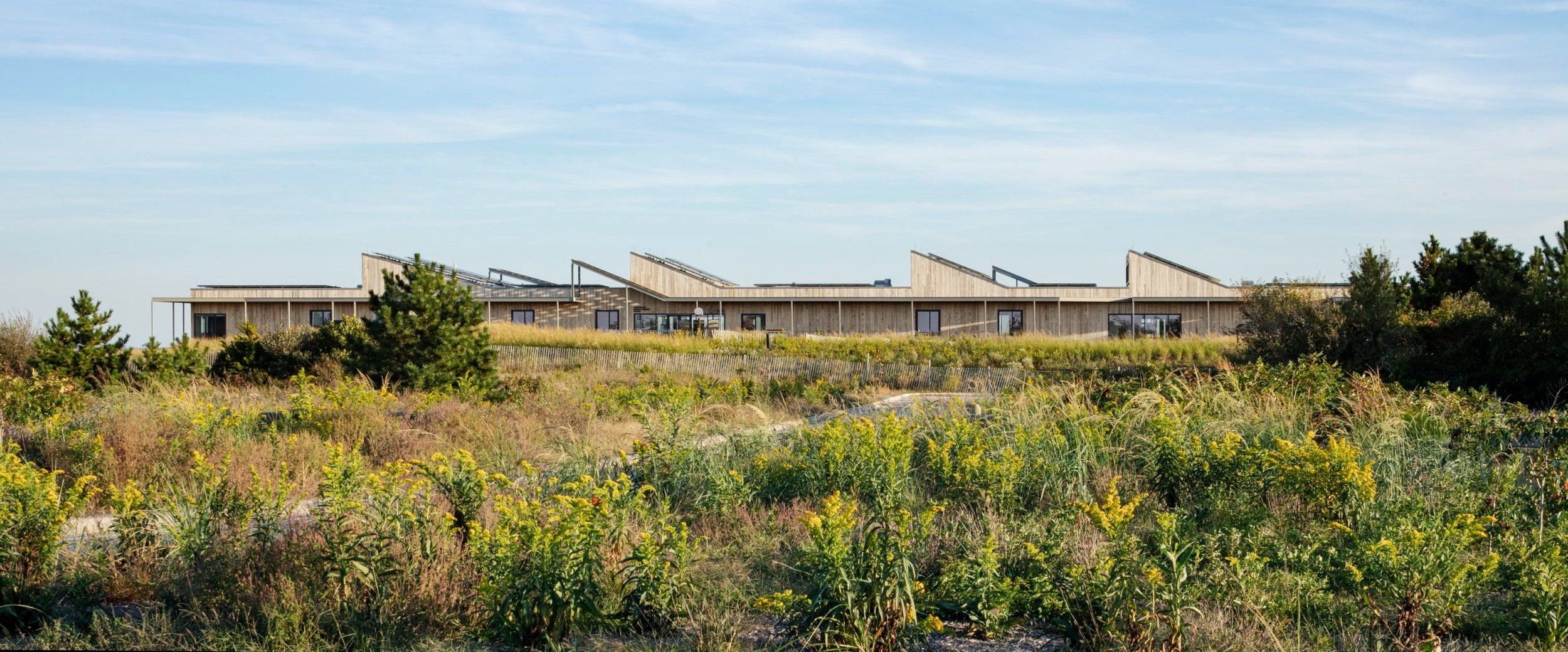
Outside the Center’s doors, the coast becomes the classroom.
A living, learning environment
Exhibits embedded in the Center’s grounds introduce the species who support local ecosystems, as well as the renewable energy and sustainable design elements that connect the building to the landscape. Panels on the South Porch help visitors interpret what they can see in the dunes and on the horizon.
Stop by the Front Desk to borrow a Pollinator Garden Guide, and learn more about how this complex place keeps itself up and running.





